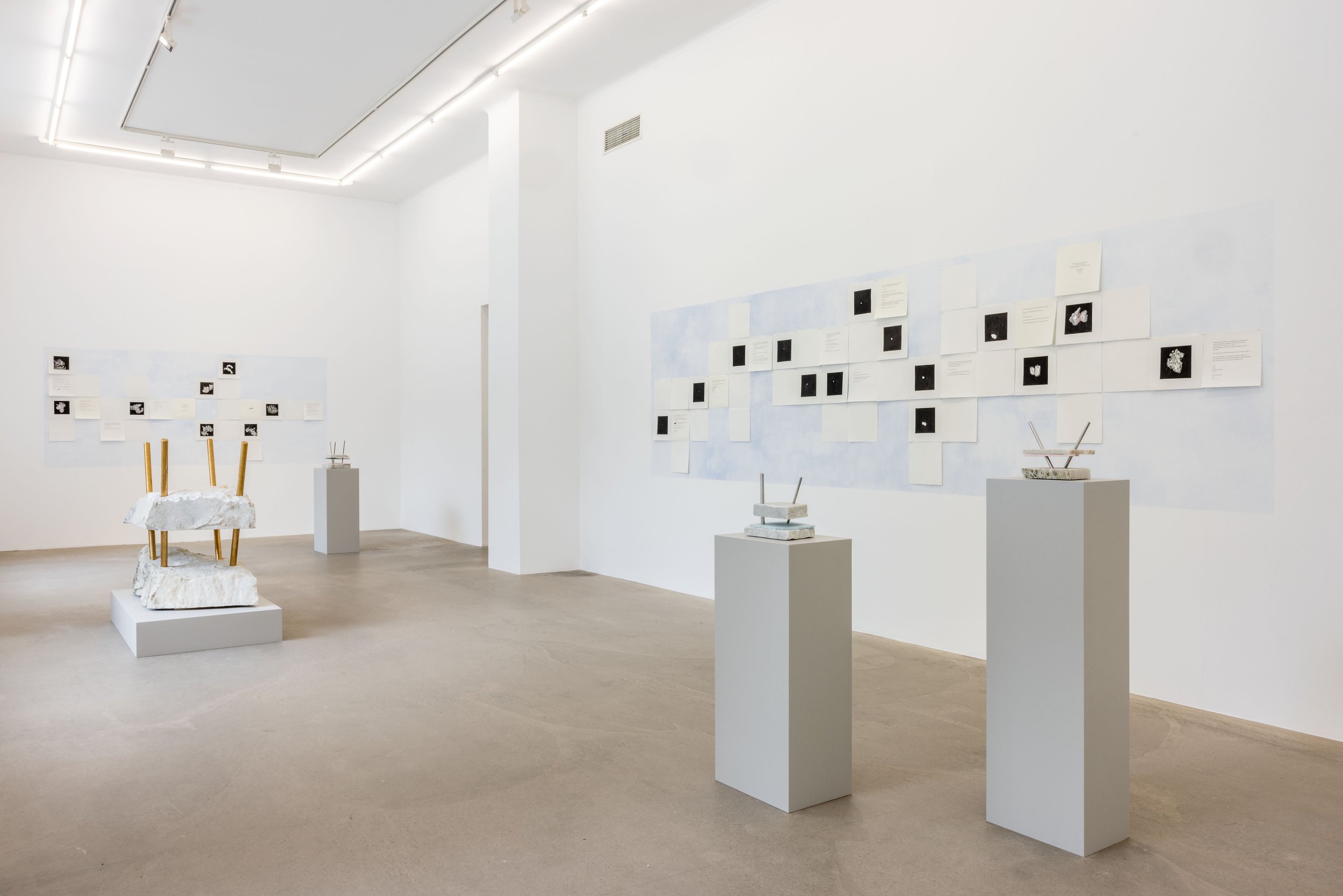THE ROSETTA DIARY
17.8 2023 – 17.9 2023 ANNA BOHMAN GALLERY
The restrictions brought on by the pandemic made drawing the modus operandi for Hanna Ljungh for a while. Her artistic work moved into her life at home. The starting point for her daily drawings were photographs taken by the space probe Rosetta during her journey towards the comet 67P Tjurjumov/Gerasimenko. A long voyage, with the primary mission to collect samples from the comet, in order to discover elements that can have been of importance in creating life on Earth.
The Rosetta Diary grew bit by bit, the charcoal and the paper provided a space for the artist within the sphere of her family. Felix, one of Hanna Ljungh’s sons, accidentally drew on the backside of some of the charcoal drawings. Figures in coloured pencil created traces in the coal and grew into the artistic process. The work with The Rosetta Diary manifested itself as a junction between artistry and motherhood, a process of the connection between the self and its surroundings. The tangible closeness of the restraints of the pandemic was given an outlet due to a space probes journey towards a distant comet.
The human body consists of 18% coal. Coal atoms never disappear, they only transform. The tactility of the charcoal pencil’s harsh softness had an impact on the creative process, where the material itself created myriads of traces of thought. Coal is versatile, it can form millions of chemical compounds. The coal within us probably originates from the void between the stars.
Hanna Ljungh invited writer Emma Warg to a collaboration with The Rosetta Diary. Warg wrote a collection of poems that now belong to the work. The poems depart from the viewer’s gaze in the encounter with the drawings and they follow the space probe’s voyage towards the comet. New meanings arise and new associations form, both dependent on and separate from the drawings. The term OOO (Object oriented ontology) has been of importance during the working process - as a kind of exercise in the rejection of the supremacy of human objects versus those non-human. A dream-like conversation developed between drawings and text, about the space probe, the comet and the transmitter, Philae, that Rosetta (for the first time in history) succeeded in placing on the surface of the comet, before she was smashed into pieces.
The blue colour YlnMn or Pigment Blue 86 that surrounds and give colour to The Rosetta Diary is the first inorganic blue pigment that has been produced in over 200 years. It was discovered in 2009 in the mineral hibonite which was extracted from meteorites that have crashed on the surface of the earth.
During Hanna Ljungh’s work with the drawings, sketches emerged of bed-like sculptures made of stone, clutched to each other with steel bars. The sculptures are stabile as rock with a protective roof, and they seem constructed out of the dream of a safe place. At the same time the sculptures breach under their own intention and come across as the threatening, limiting and crushing beds we risk to prepare for our children.
To colonise space, build space ships and bunkers to secure the future for a few has created a different kind of race than that between nations. The idea of the downfall feeds from real need, and the flight towards space and the underground requires capital. The vessel that we inhabit, our own body, is unbearably vulnerable. Its freedom is limited by the world and our relation to the world. And yet, it remains a force for change, by its own means.
Hanna Ljungh’s practice is an examination of what we know about the universe in which we live, and how we humans mirror that, a diligent determination that allows the indeterminable to appear. The uniting between form and content, artist and viewer, can take on a fleeting form where the matter can find its way through the human.










foto: Mattias Johansson